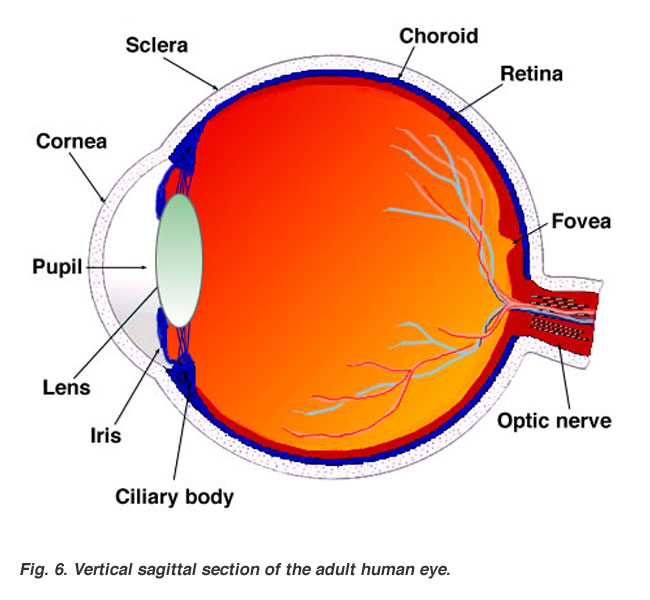I get a lot of questions about the sort of projects that are going on at Stem Cell Central.
Here is a bit about what we do:
Stem Cells in the Eye
Stem cells can be found in both embryos and adults. They are the original building blocks for every organ, tissue and cell in the body, including the eye. Stem cells behave like blank microchips that can be programmed to perform any number of specialized tasks. My laboratory studies stem cells in the eye, as a way to repair and to prevent damage to the eye. We have two important stem cell projects going on at Stem Cell Central. These involve the cornea and the retina, depicted in the diagram below:

Here is a bit about what we do:
Stem Cells in the Eye
Stem cells can be found in both embryos and adults. They are the original building blocks for every organ, tissue and cell in the body, including the eye. Stem cells behave like blank microchips that can be programmed to perform any number of specialized tasks. My laboratory studies stem cells in the eye, as a way to repair and to prevent damage to the eye. We have two important stem cell projects going on at Stem Cell Central. These involve the cornea and the retina, depicted in the diagram below:

The Cornea:
The cornea is the clear outermost surface of the eye and is subject to trauma, injury, and every day wear and tear. The stem cells of the cornea are located at the limbus (the thin area between the clear cornea and the white sclera of the eye). The purpose of corneal, or limbal, stem cells is to maintain a healthy eye surface and replace cells that are lost and blinked away. Limbal stem cells can be transplanted for severe eye injuries. During this outpatient procedure, some limbal stem cells are taken from the healthy eye, or a donor's eye, and then transplanted to the affected eye.
In a successful transplant, limbal stem cells will produce a new healthy layer of cells in the patient's eye. The success rate varies from 25 percent to 70 percent, depending on the underlying condition of the affected eye. Limbal stem cell transplantation in the eye holds great promise for patients. We are still working to determine the best source of cells to use, the best way to transfer the cells and better ways to decrease the risk of rejection between donor cells and the recipient.
Retinoblastoma: A cancer of the eye
Retinoblastoma is the most common eye tumor of early childhood, with 90% of cases occurring before the age of five. This early onset of disease led us to investigate the earliest origins of retinoblastoma, in the form of primitive stem cells. My laboratory, has identified cancer stem cells in retinoblastoma tumors that are believed to be responsible for the spread of tumors as well as resistance to chemotherapy. Although cancer stem cells comprise a small percentage of the total tumor, it only takes one pesky stem cell to spread the tumor to another location in the body. The good news is that we can now target these cancer stem cells for new treatments that will circumvent their unique resistance to chemotherapy and their ability to spread tumors to distant sites. You can see these stem cells as the red dots in a sea of blue in this recent photomicrograph from my laboratory:
The cornea is the clear outermost surface of the eye and is subject to trauma, injury, and every day wear and tear. The stem cells of the cornea are located at the limbus (the thin area between the clear cornea and the white sclera of the eye). The purpose of corneal, or limbal, stem cells is to maintain a healthy eye surface and replace cells that are lost and blinked away. Limbal stem cells can be transplanted for severe eye injuries. During this outpatient procedure, some limbal stem cells are taken from the healthy eye, or a donor's eye, and then transplanted to the affected eye.
In a successful transplant, limbal stem cells will produce a new healthy layer of cells in the patient's eye. The success rate varies from 25 percent to 70 percent, depending on the underlying condition of the affected eye. Limbal stem cell transplantation in the eye holds great promise for patients. We are still working to determine the best source of cells to use, the best way to transfer the cells and better ways to decrease the risk of rejection between donor cells and the recipient.
Retinoblastoma: A cancer of the eye
Retinoblastoma is the most common eye tumor of early childhood, with 90% of cases occurring before the age of five. This early onset of disease led us to investigate the earliest origins of retinoblastoma, in the form of primitive stem cells. My laboratory, has identified cancer stem cells in retinoblastoma tumors that are believed to be responsible for the spread of tumors as well as resistance to chemotherapy. Although cancer stem cells comprise a small percentage of the total tumor, it only takes one pesky stem cell to spread the tumor to another location in the body. The good news is that we can now target these cancer stem cells for new treatments that will circumvent their unique resistance to chemotherapy and their ability to spread tumors to distant sites. You can see these stem cells as the red dots in a sea of blue in this recent photomicrograph from my laboratory:

In summary.....
Stem cells are the way of the future. They have exciting potential to repair damage to the eye and are already being used for repair of the cornea. Adult stem cells, such as the ones we use from the corneas of consenting organ donors, are not under federal restrictions and cause no ethical concerns. Everyone can be enthusiastic about the idea of using these cells to repair and replace damaged cells of the eye in a variety of dieases. The possibilities are endless.
Stem cells are the way of the future. They have exciting potential to repair damage to the eye and are already being used for repair of the cornea. Adult stem cells, such as the ones we use from the corneas of consenting organ donors, are not under federal restrictions and cause no ethical concerns. Everyone can be enthusiastic about the idea of using these cells to repair and replace damaged cells of the eye in a variety of dieases. The possibilities are endless.

1 comment:
thanks for the insight, 'doc....
KEvron, first to foul this blog with a pun
Post a Comment